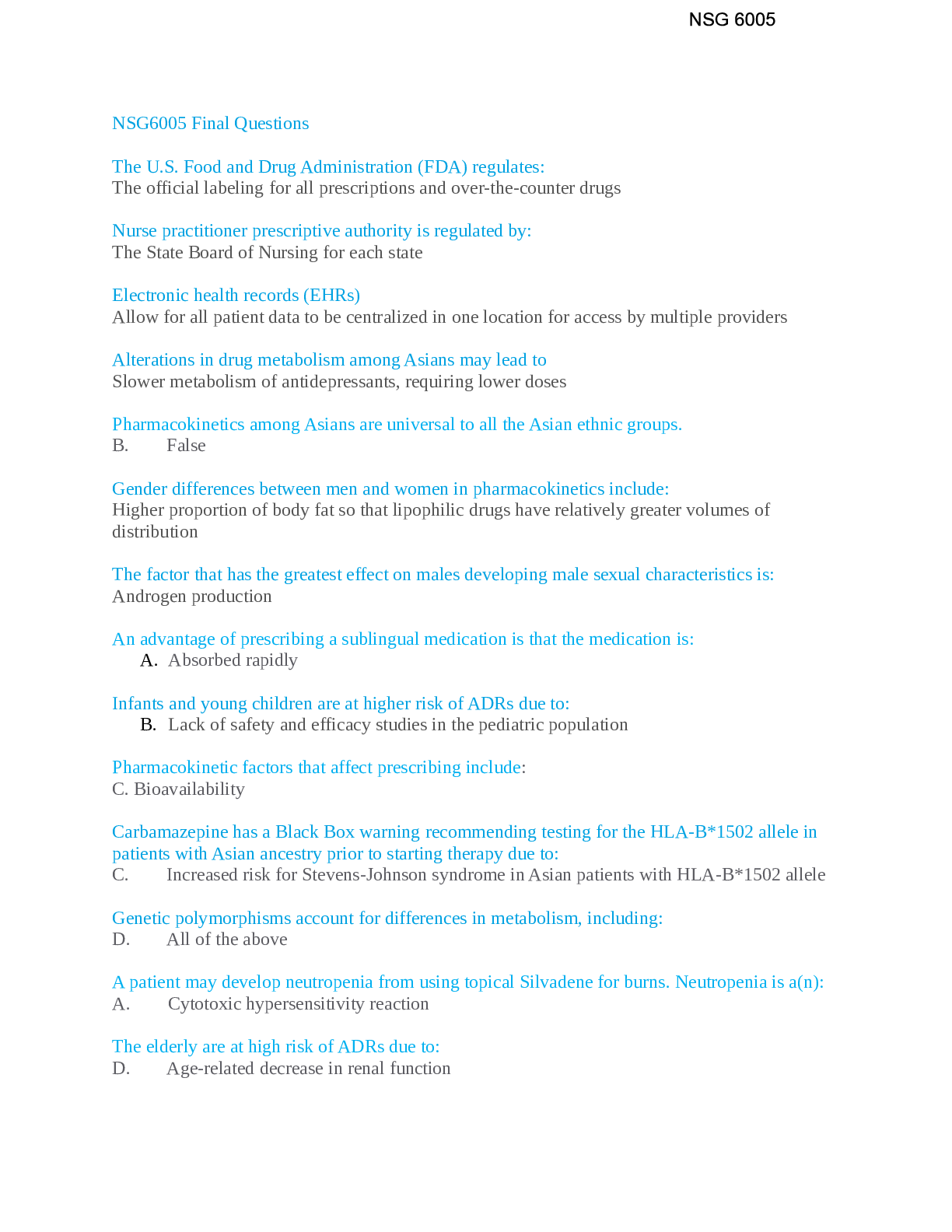Health Care > EXAM > NRNP 6531 Combined Midterm and Final Questions and Answers (All)
NRNP 6531 Combined Midterm and Final Questions and Answers
Document Content and Description Below
A 19-year-old student who is on prescription combined oral contraceptive pills is being seen for lower GI pain. The nurse practitioner has obtained a Pap smear and is about to perform the bimanual exa... m. She gently remove the plastic speculum from the vagina. While the NP is performing the bimanual vaginal exam, the patient complaints of slight discomfort during palpation of the ovaries. Which with the following is a true statement? The fallopian tubes and ovaries are not sensitive to light or deep palpation The ovaries are sensitive to deep palpation but they should not be painful. The uterus and ovaries are not important organs of reproduction The uterus and ovaries are both sensitive to any Palpation {{Ans- The ovaries are sensitive to deep palpation but they should not be painful. Unilateral adnexal pain accompanied by cervical motion tenderness and purulent endocervical discharge suggestive of PID When seen on a wet mount like the following, clue cells would indicate the treatment by which of the following? Flagyl (Metronidazole) 500mg PO BID x 7 days Diflucan (Fluconazole) 150mg PO x 1 Rocephin (Ceftriaxone) 250mg IM x 1 and Azithromycin 1 g PO x 1 No treatment needed {{Ans- Flagyl (Metronidazole) 500mg PO BID x 7 days A 54-year-old female presents with small to moderate amount of vaginal bleeding of recent onset. She has been postmenopausal for approximately 2 years. With diagnosis is least likely? Endometrial carcinoma Ovarian cancer Endometrial hyperplasia Uterine polyps {{Ans- Ovarian cancer Ovarian cancer may present as an adnexal mass, pelvic or abdominal symptoms and a variety of others. Postmenopausal bleeding is an uncommon presentation of ovarian cancer, but can present this way. Other pathologies are usually evaluated before considering ovarian pathology. Clue cells are found in patients who have: Pneumonia Leukemia Epidermal fungal infections Bacterial vaginosis {{Ans- Bacterial vaginosis Clue cells are hallmark sign of bacterial vaginosis and can be seen in a microscopic exam. A 40 year old female patient returns to your clinic to review her pap smear results from the previous week. You tell her the test is abnormal with "atypical squamous cells of undetermined significance and HPV positive". What is the appropriate next step of the following? Repeat cytology immediately Repeat cytology in 1 year Perform or refer out for colposcopy Repeat cytology in 2-4 months {{Ans- Perform or refer out for colposcopy A 65 year old female presents with c/o vaginal soreness and dysuria that has been intermittent for several years. She notes the pain is worse after intercourse with her husband of 30 years, with whom is in an monogamous relationship. She denies vaginal discharge and has not had a pap smear since her total hysterectomy ten years ago. She currently only takes a multivitamin. Your wet mount reveals few lactobacilli and increased parabasal cells. What is your likely diagnosis? Trichomonas vaginalis Vaginal candidiasis Atrophic vulvovaginitis Bacterial Vaginosis {{Ans- Atrophic vulvovaginitis An initial pharmacological approach to the patient was diagnosed with primary dysmenorrhea could be: NSAIDs prior to the onset of menses NSAIDs at the time symptoms begin or onset of menses Combination of acetaminophen and NSAIDs Acetaminophen {{Ans- NSAIDs at the time symptoms begin or onset of menses Pain associated with dysmenorrhea is likely due to prostaglandins. NSAIDs are prostaglandin synthesis inhibitors. They are usually started at the onset of menses or onset of symptoms and continued for 2-3 days depending on symptom pattern. There is no demonstrated increase in efficacy when acetaminophen is added or given alone. A 26-year-old female patient has been diagnosed with gonorrhea. However should she be managed? Ceftriaxone and azithromycin Cefixime and azithromycin Ceftriaxone only Penicillin G {{Ans- Ceftriaxone and azithromycin Usual treatment for gonorrhea/Chlamydia includes ceftriaxone 250 mg IM in conjunction with 1 g azithromycin by mouth. A 25-year-old female presents with lower abdominal pain. Which finding would indicate the etiology as pelvic inflammatory disease? Abnormal CMP Temperature greater than 101°F Hematuria Presence of hyphae {{Ans- Temperature greater than 101°F Symptoms of PAD include elevated temperature, abnormal cervical or vaginal discharge, presence of abundant WBC, elevated sedimentation rate or C-reactive protein. The CDC recommends empiric treatment of PID if lower abdominal pain or pelvic pain is present concurrently with cervical motion tenderness or uterine/adnexal tenderness A 27-year-old asymptomatic male presents with generalized lymphadenopathy. He has multiple sexual partners and infrequently uses condoms. Of the following choices, what tests should be performed? HIV test Comprehensive metabolic panel Lymph node biopsy RPR {{Ans- HIV test Asymptomatic HIV infections often have persistent generalized lymphadenopathy. What is your treatment for Atrophic Vulvovaginitis? Diflucan (Fluconazole) 150mg PO x 1 Flagyl (Metronidazole) 2g PO x 1 Premarin cream 0.5g PV 1-3 x wk Clindamycin 2% 5g applicator PV x 7 days {{Ans- Premarin cream 0.5g PV 1-3 x wk You suspect that the patient you are seeing as HIV. which with the following is a sensitive screening test for human immunodeficiency virus? HIV antibody test ELISA test Combination HIV-1 and HIV-2 antibody immunoassay with P 24 antigen Western blot test {{Ans- Combination HIV-1 and HIV-2 antibody immunoassay with P 24 antigen The CDC recommends screening for combination antigen/antibody near as 8 with PT 24 antigen. Previously the ELISA was used as a screening test, and a Western blot was a confirmatory test. However they tested only for HIV antibody. The CDC recommends testing everyone between the ages of 13-64 years for HIV at least once as part of a routine health care. If risk factors are present, the patient should be tested for HIV annually. For sexually active gay and bisexual man, the CDC recommends more frequent testing, perhaps every 3-6 months. After an IUD is placed, the threads should be cut so approximately ______ are visible. This should then be _________. 6 cm; measured and documented in the chart. 3 cm; measured and forgotten about. 3 cm; measured and documented in the chart. 6 cm; measured and forgotten about. {{Ans- 6 cm; measured and documented in the chart. [Show More]
Last updated: 1 year ago
Preview 1 out of 154 pages

Reviews( 0 )
Document information
Connected school, study & course
About the document
Uploaded On
Jul 11, 2022
Number of pages
154
Written in
Additional information
This document has been written for:
Uploaded
Jul 11, 2022
Downloads
0
Views
109



.png)


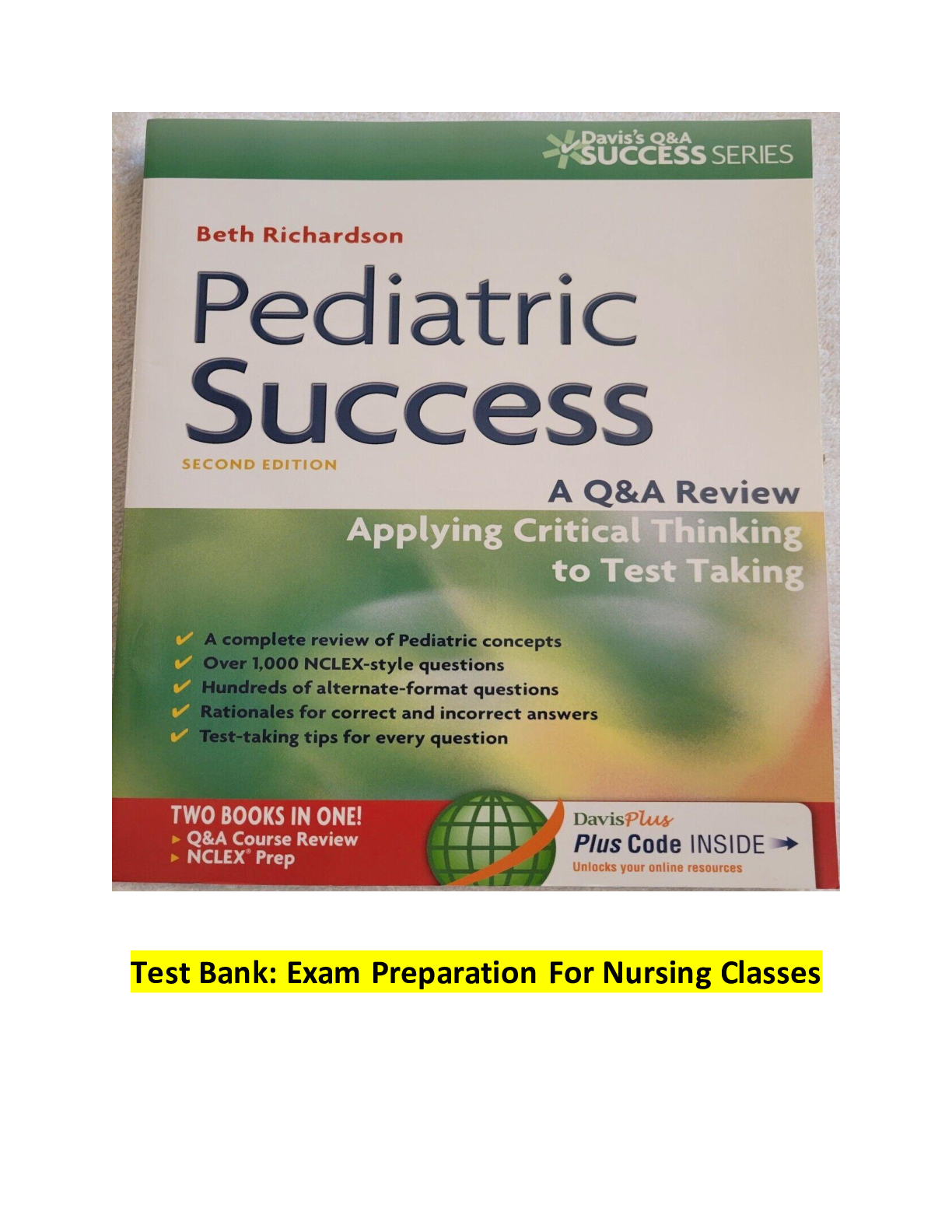
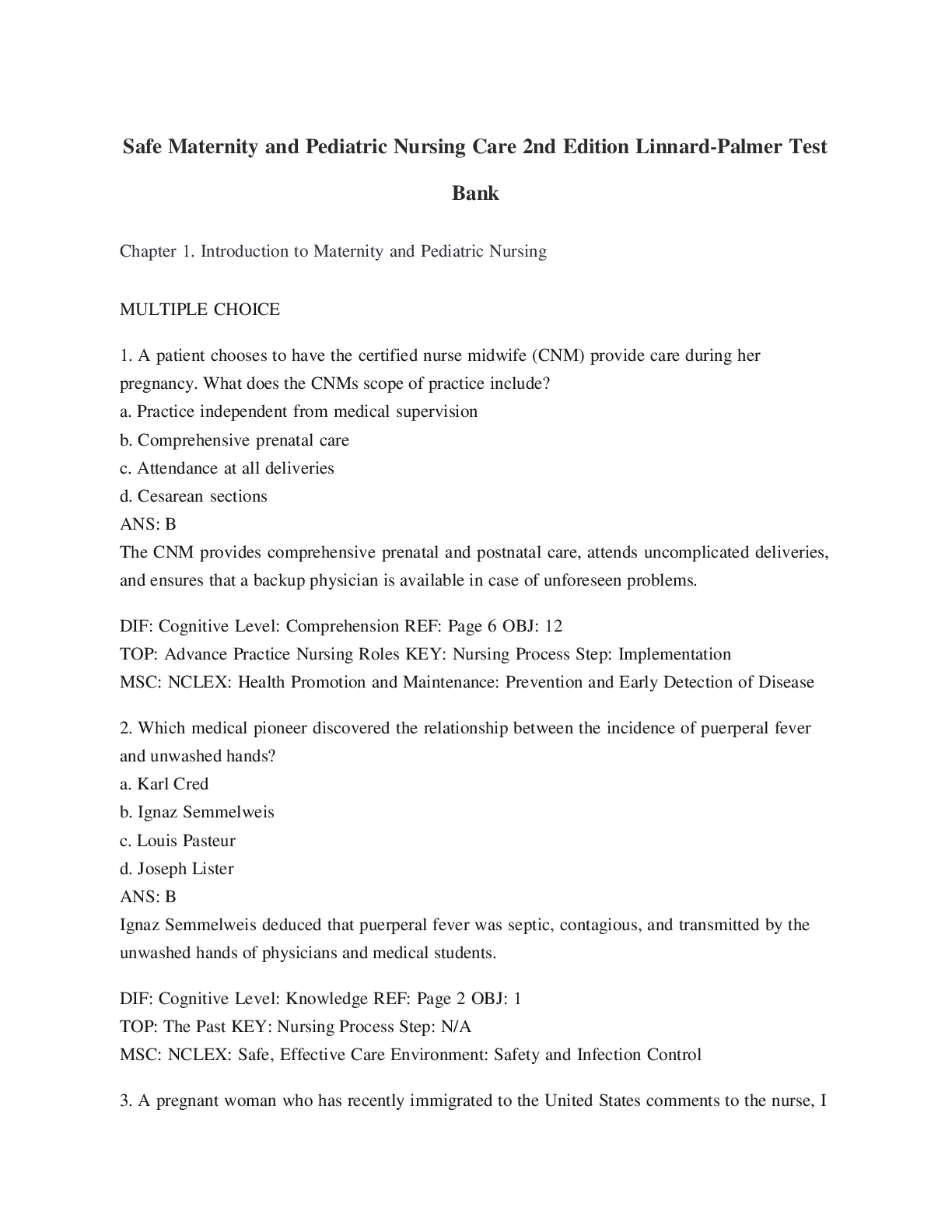
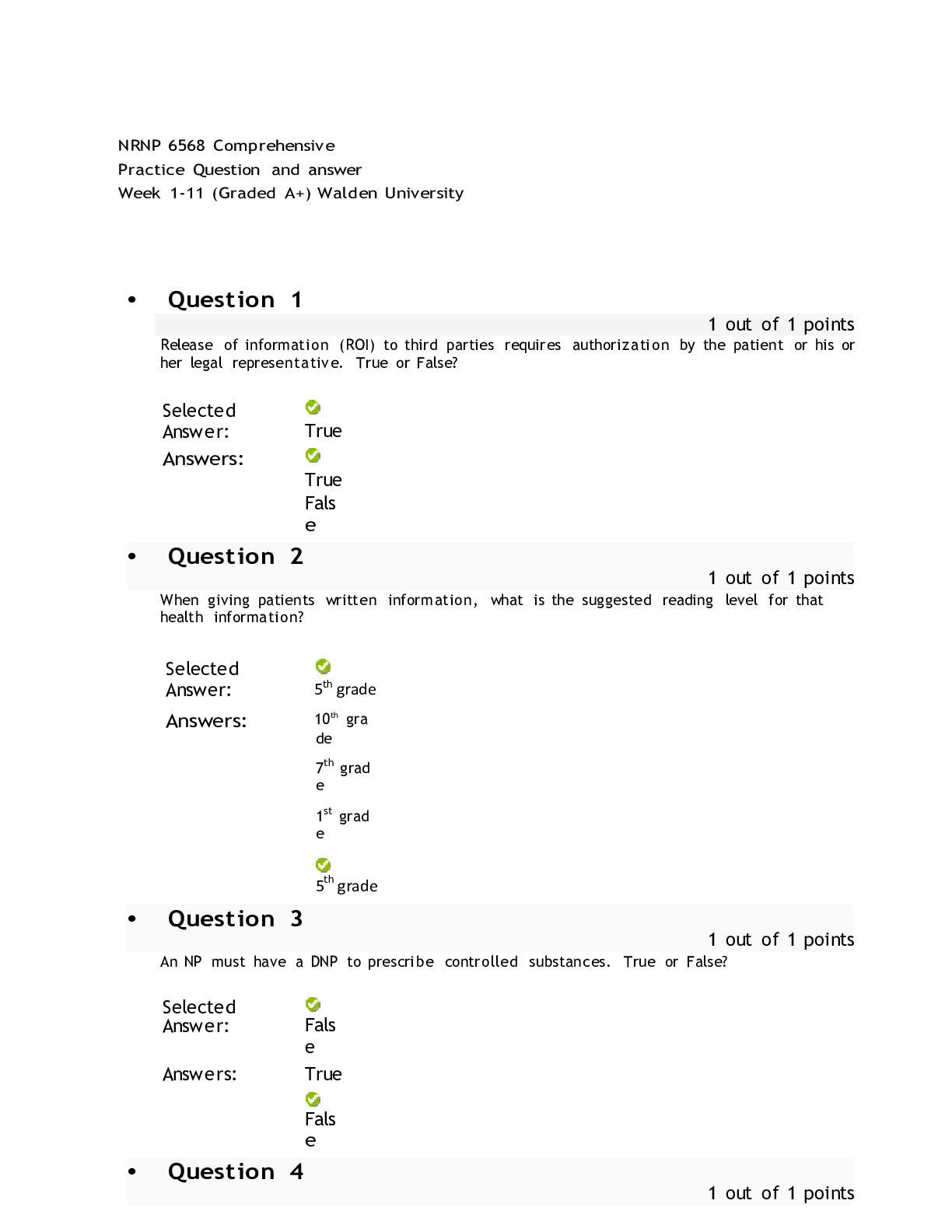

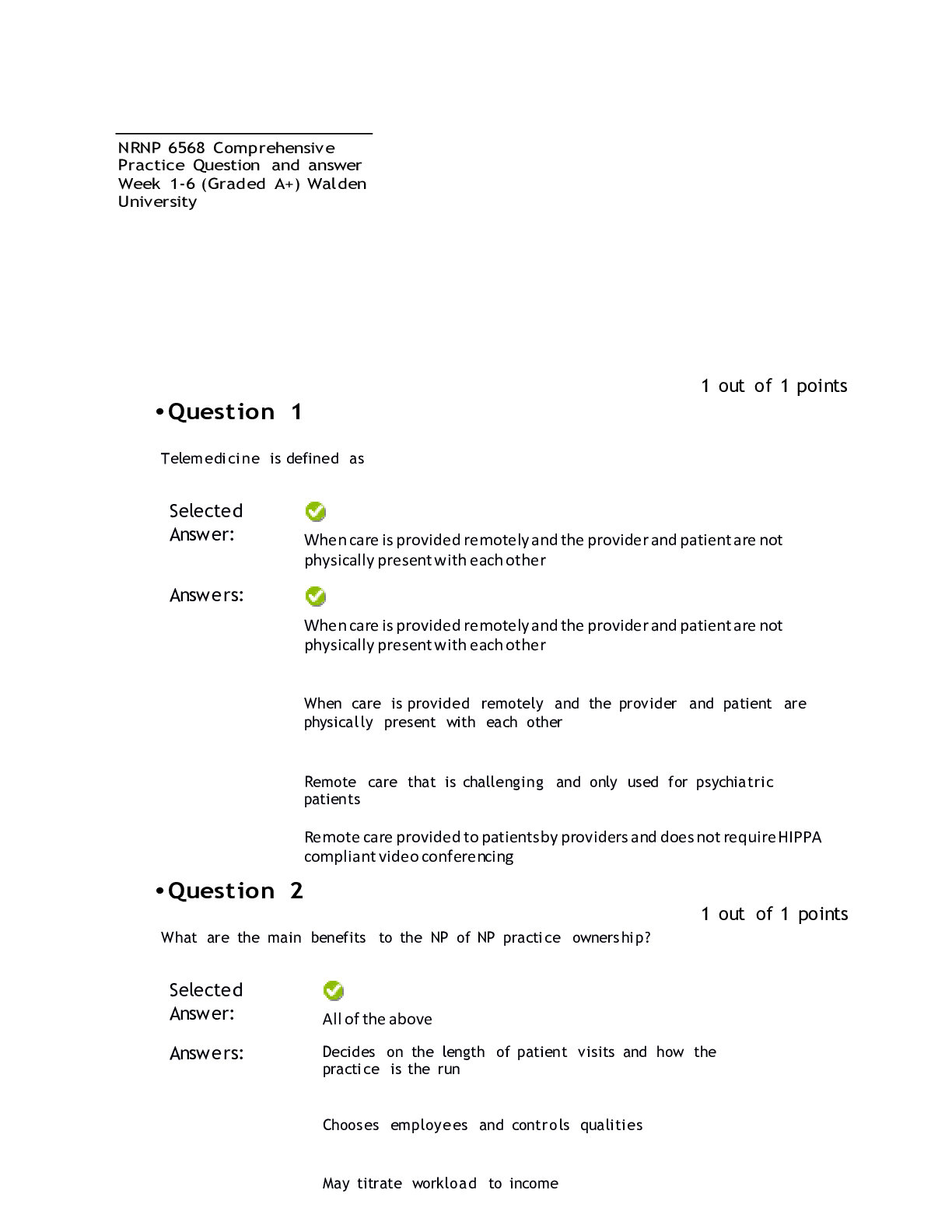




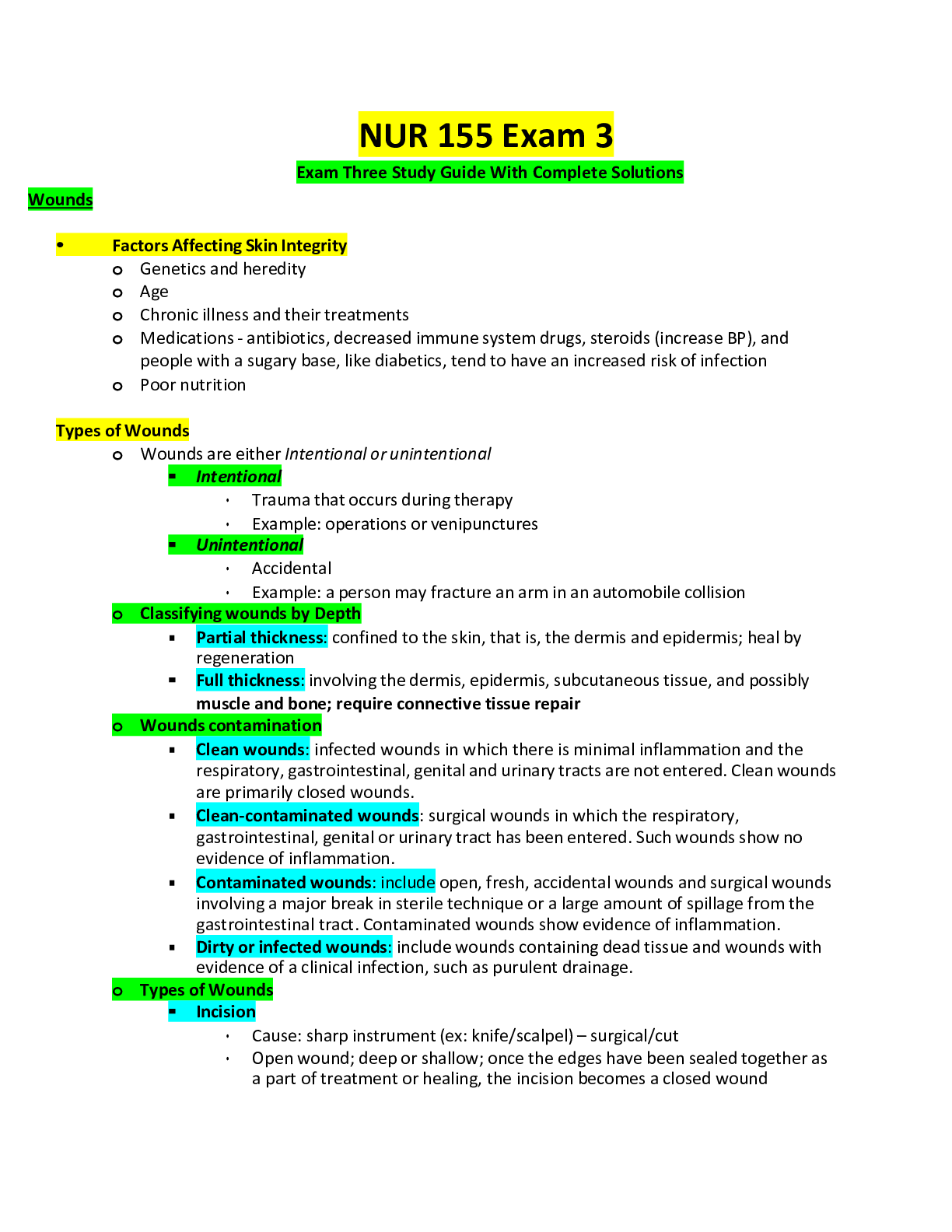
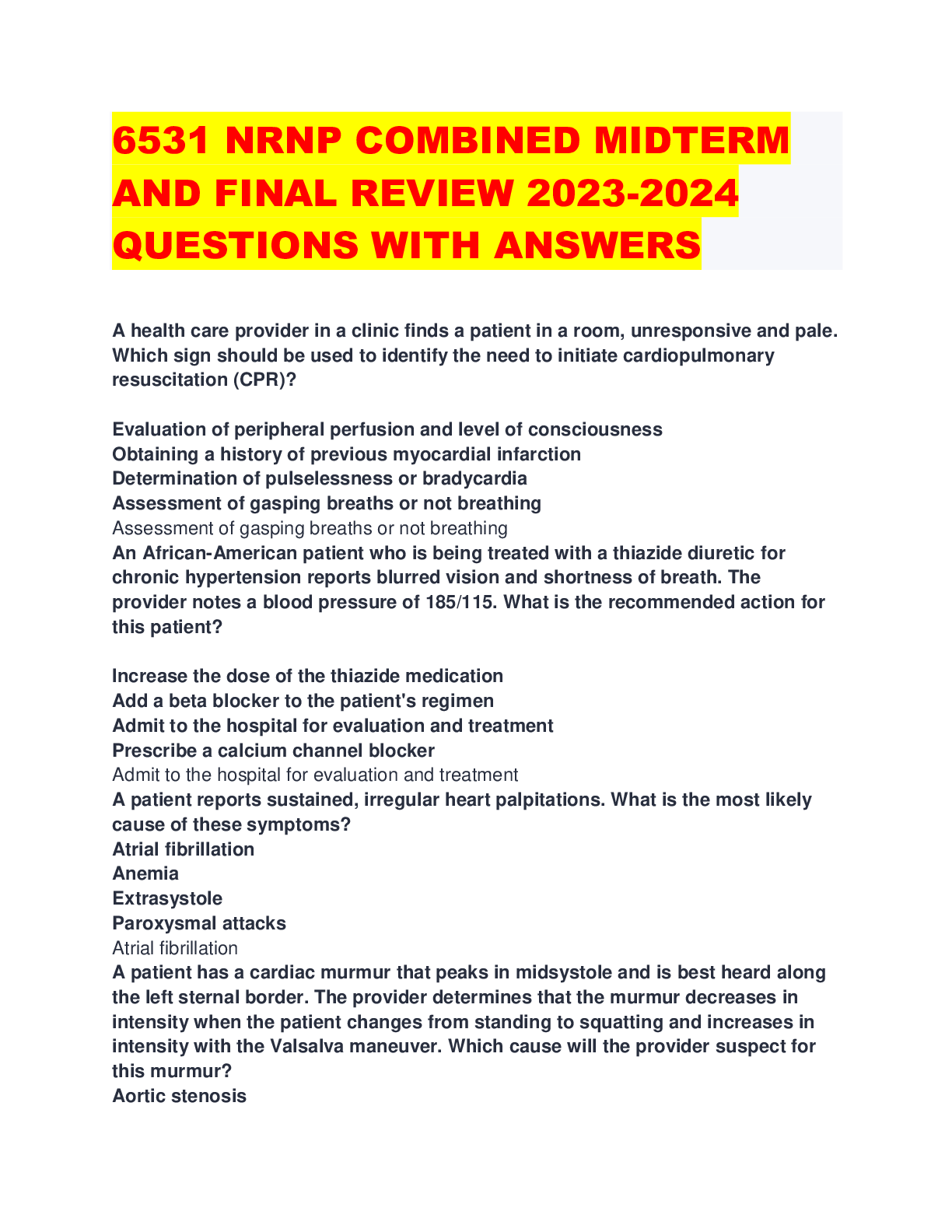

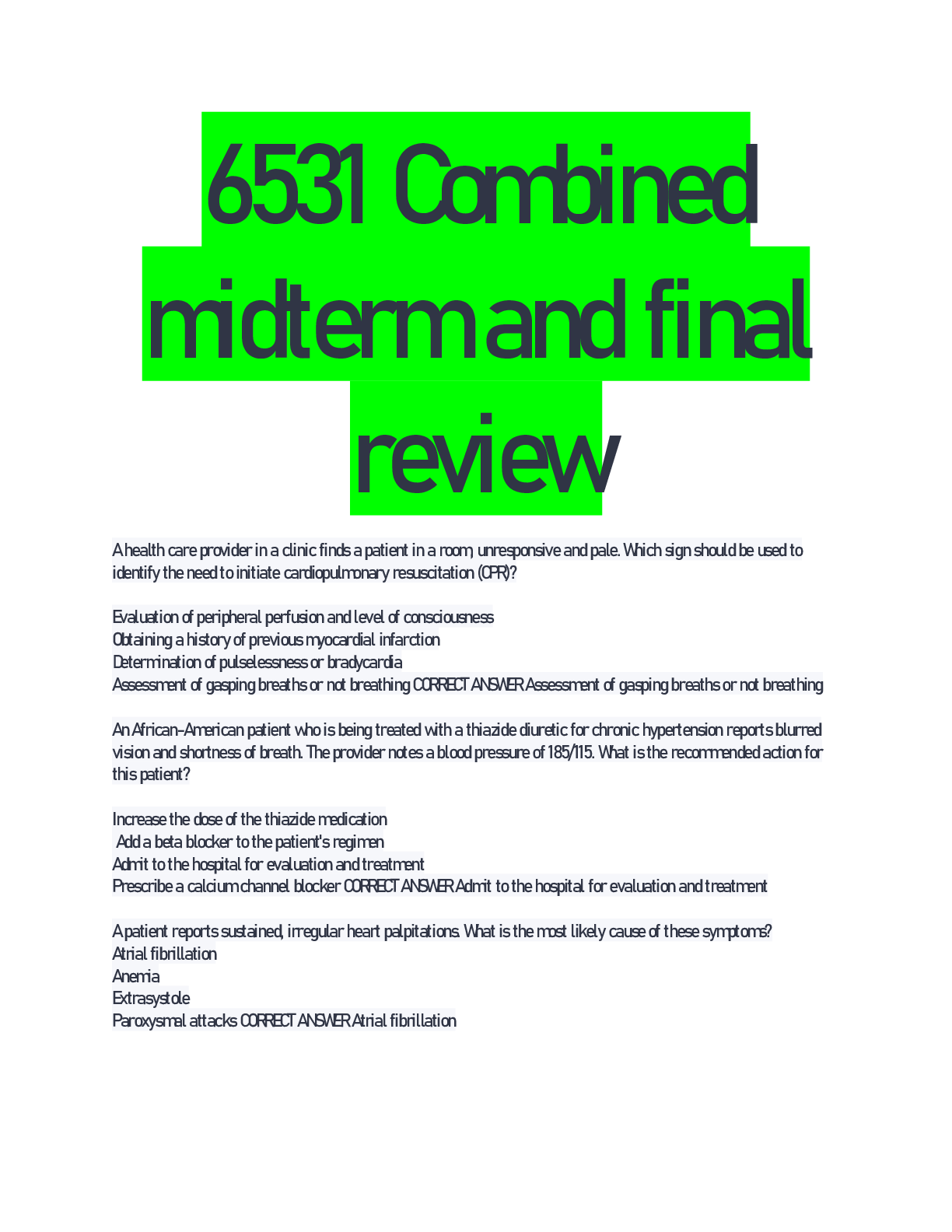


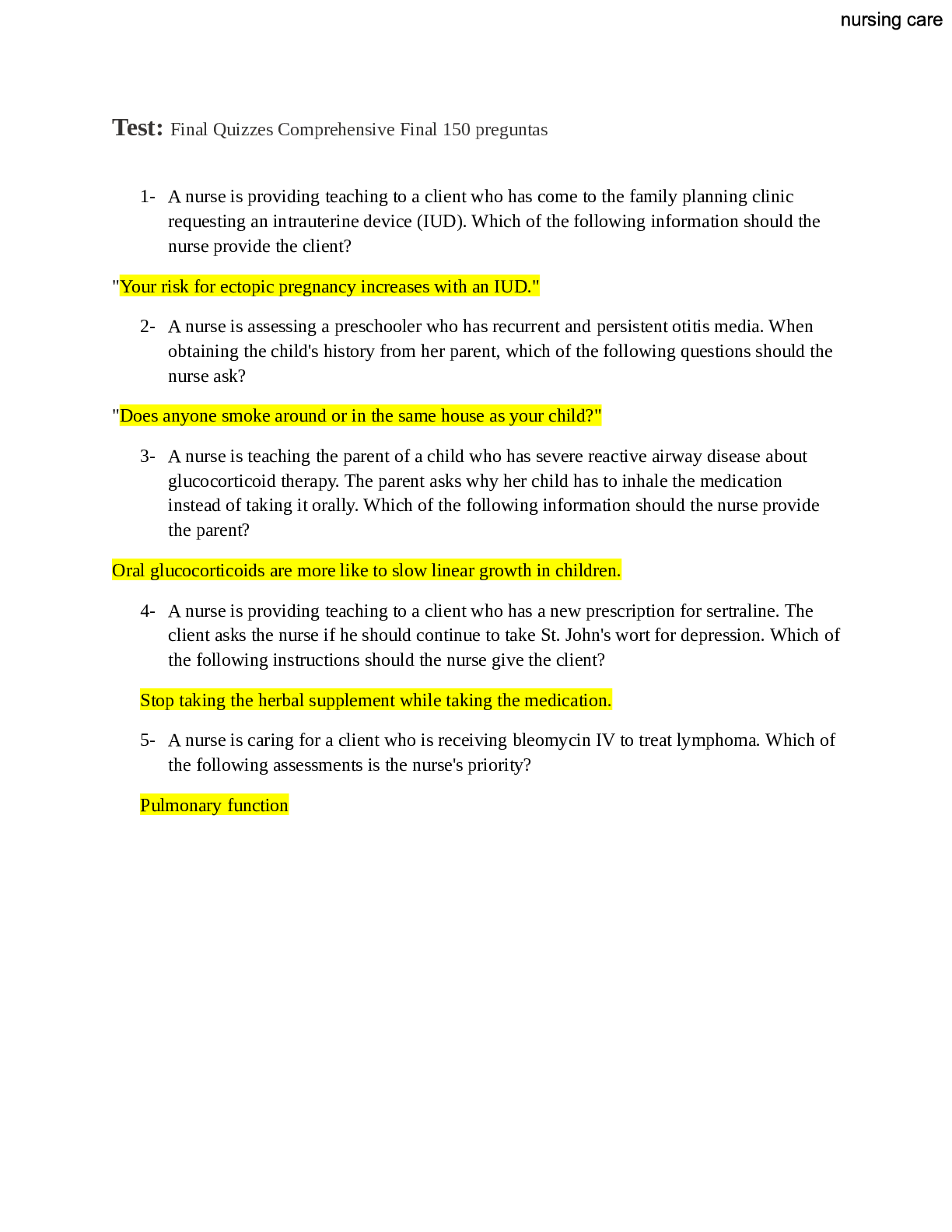
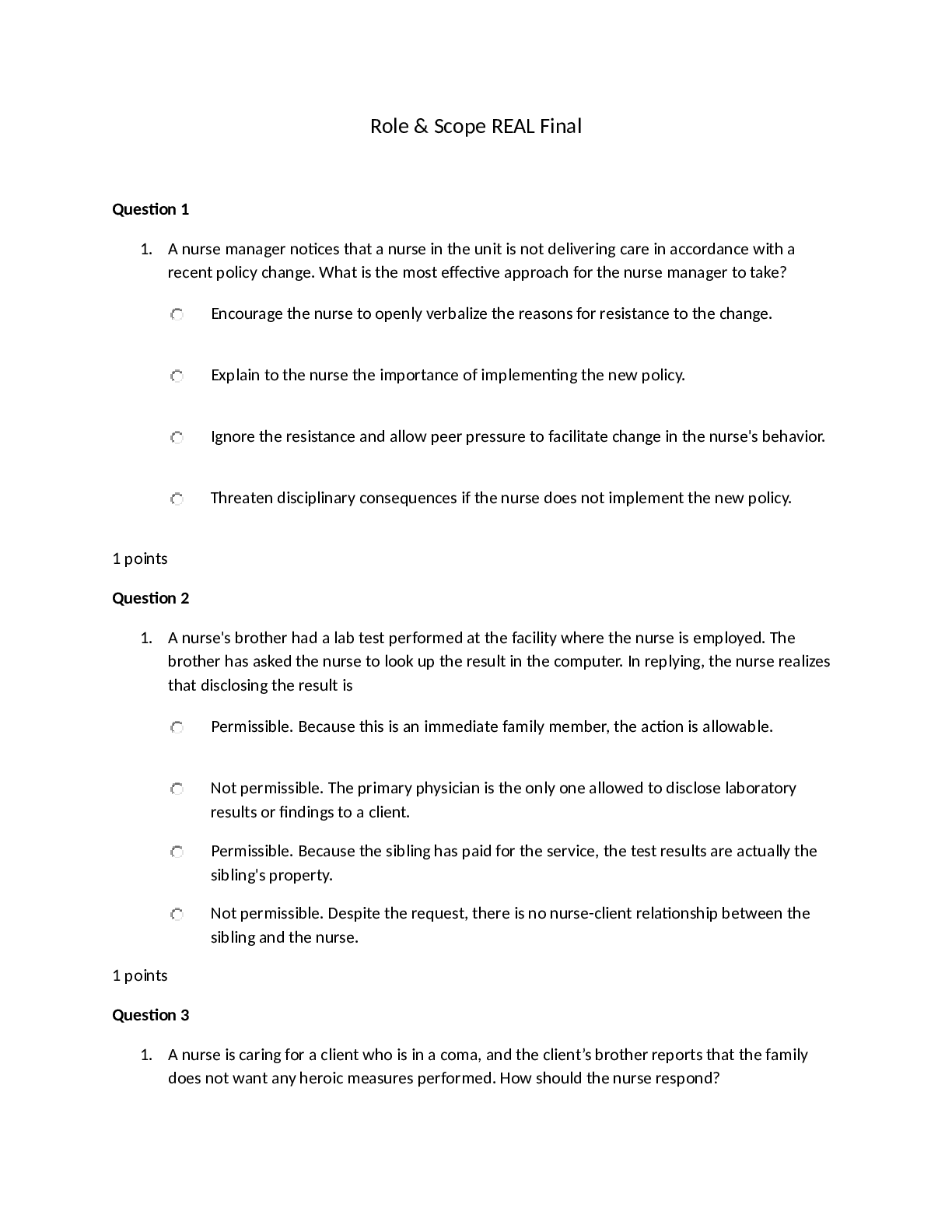
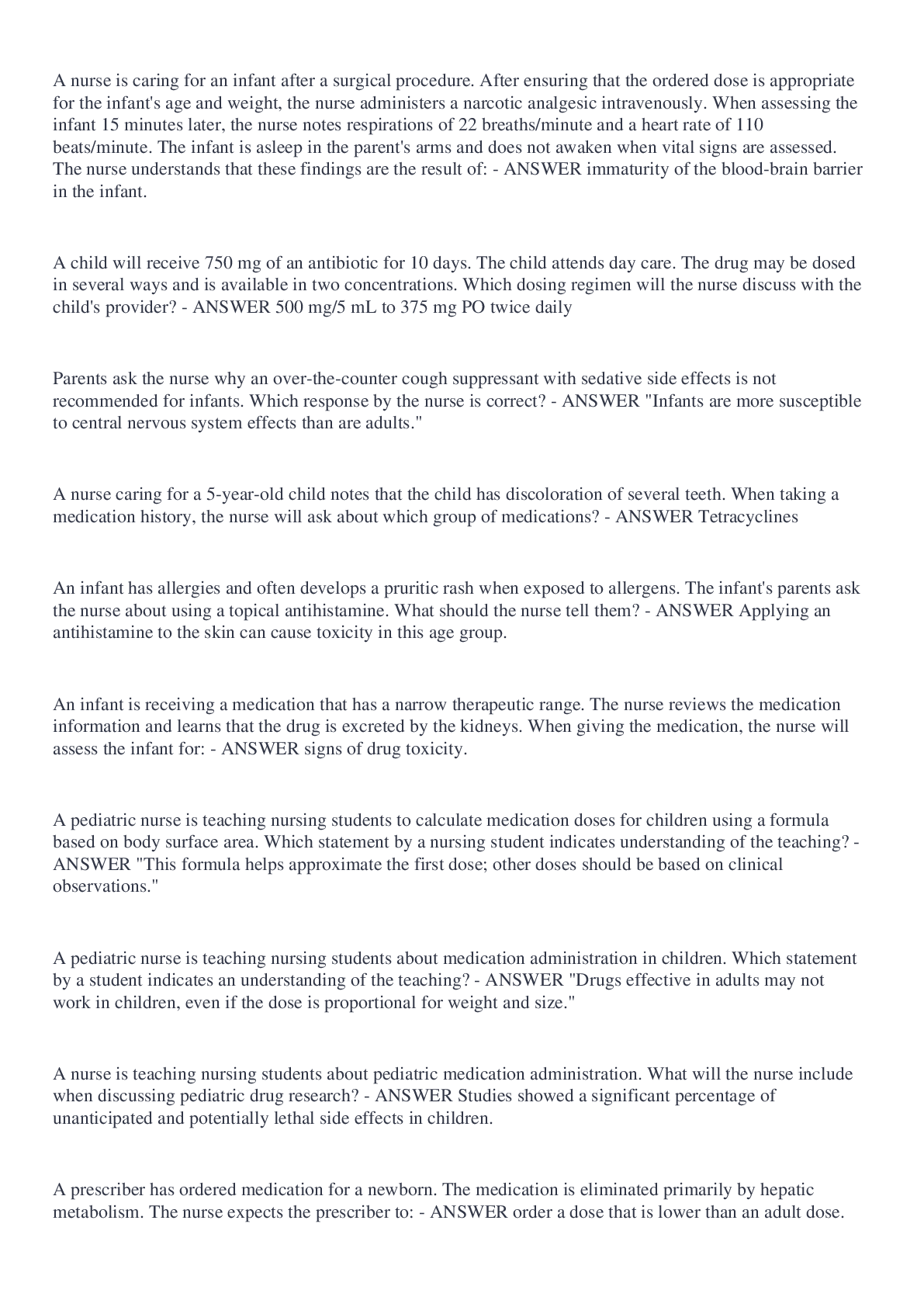

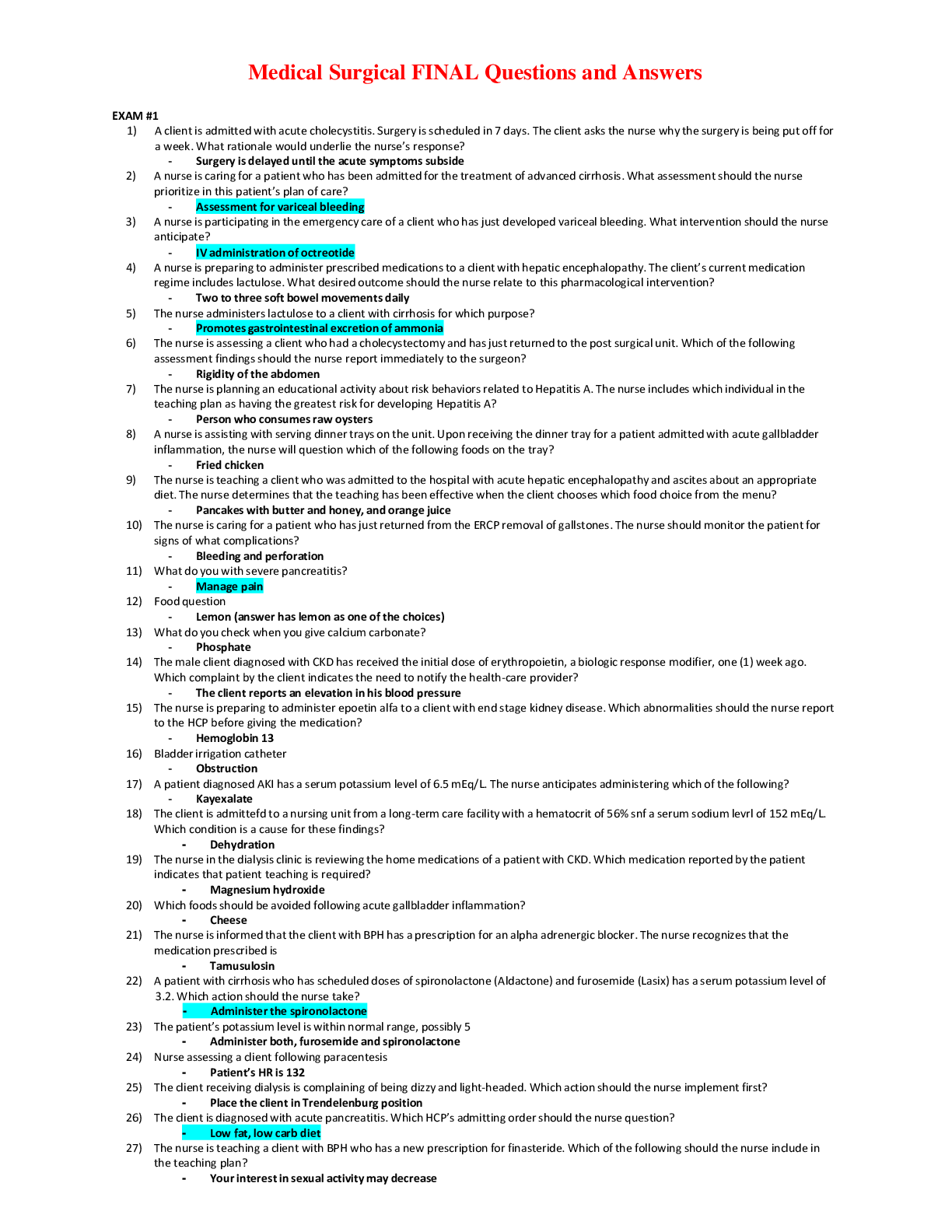

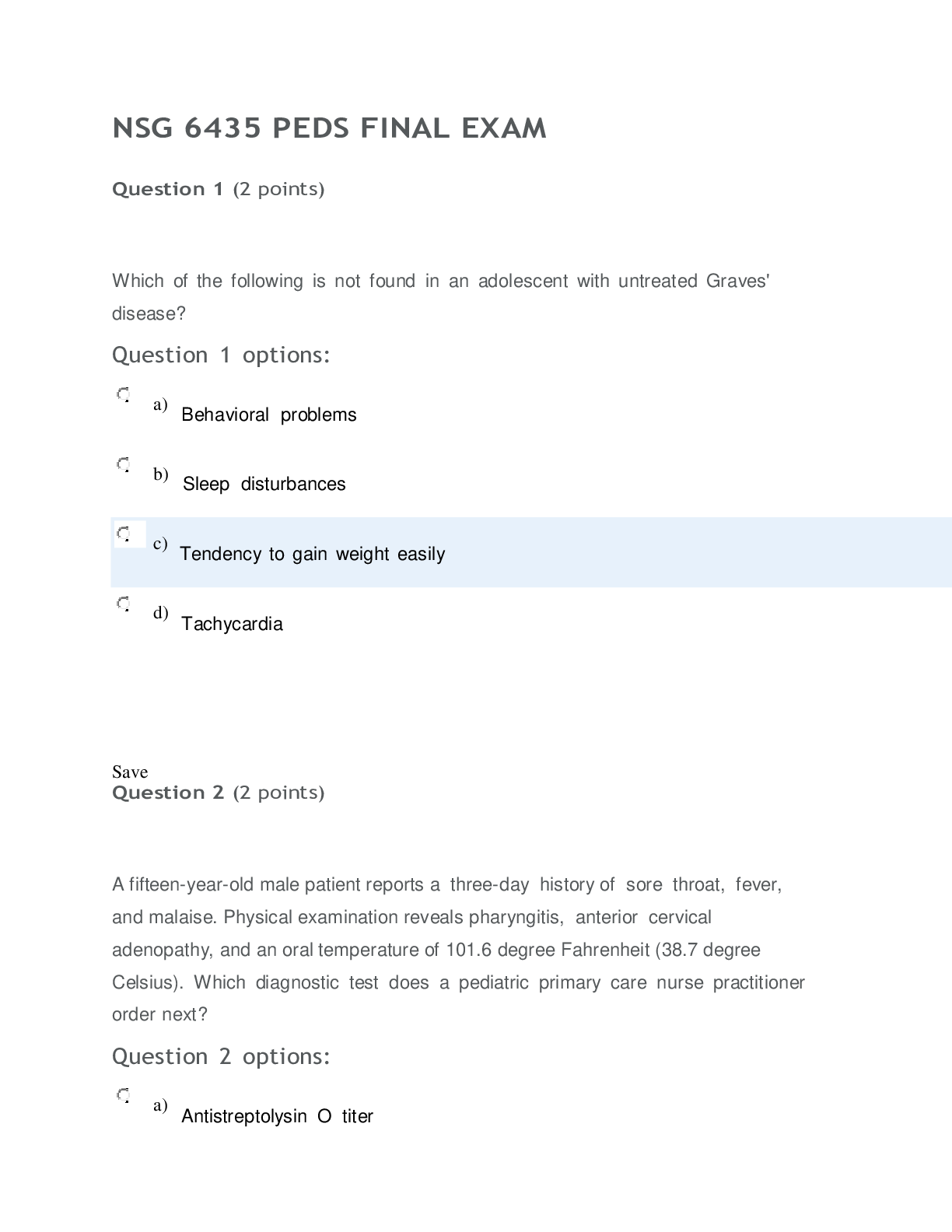

 (1).png)



